Apple iPad mini with Retina Display: Reviewed
by Anand Lal Shimpi on November 16, 2013 8:00 AM ESTThe SoC
The iPad mini with Retina Display rounds out the three platforms that use Apple’s A7 SoC. Although both the iPad Air and iPhone 5S use the A7, the mini’s implementation is closer in nature to the iPhone. The iPad mini’s SoC has always used the same package-on-package (PoP) assembly as the iPhone, with DRAM stacked on top of the SoC itself (1GB in this case). The benefit is obviously a reduction in board area, the downsides have to do with cost and thermals. That’s the first similarity between the mini’s A7 and the iPhone’s A7.
The second is one of frequencies. While the iPad Air’s A7 runs its two Cyclone CPU cores at up to 1.4GHz, the SoC in the iPad mini and the iPhone 5S runs at up to 1.3GHz. That might sound like a minor difference, but it’s far more pronounced when you look at what happens to frequency when you’re running heavy workloads.
Once again I turn to a fairly heavy CPU workload to plot performance over time. This is a multithreaded workload, slightly modified from what we used in the iPad Air review, designed to make the CPU cores consume max power. The scale is linear and the workload is the same across all devices, so what you’re effectively looking at is a graph of thermally bound CPU performance over time across all three A7 implementations:
Being the largest device (and the only device with a metal heat spreader and no DRAM stacked on top), the iPad Air obviously maintains the highest frequencies for the duration of the test. The iPhone 5S, with a significant reduction in internal volume (and a PoP SoC) reduces its CPU frequencies early on in order to keep skin temperature down and properly manage thermals. The iPad mini with Retina Display falls between the two, with its performance curve more closely following that of the iPhone 5S.
Although the mini has a similar max operating frequency to the iPhone 5S, it is a faster device thanks to it being less thermally constrained. Similarly, the iPad Air can be much faster than its clock speed would otherwise imply. If you’re wondering why Apple has been so focused on building its own SoCs and CPU architectures, this is the reason why. There’s a fixed amount of power you can dissipate in the form of heat in these mobile devices while still maintaining a good user experience. Performance per watt is the gating metric for success in mobile, and shipping high IPC/low frequency dual-core SoCs at 32/28nm is the best optimization available to a company like Apple today.
As you’d expect, our browser based CPU tests show the mini’s A7 performing in between the iPhone 5S and iPad Air. None of these tests are anywhere near as stressful as our thermal test from above, so we don’t see exaggerated differences in performance between the platforms. For most, I suspect you won’t notice a huge performance difference between the mini and Air. Those who are heavier users (e.g. audio mixing, 3D gaming, etc…), there will be a performance difference between the two iPads.
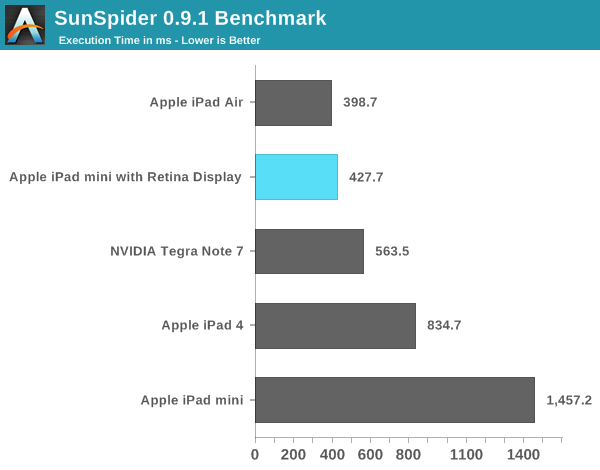

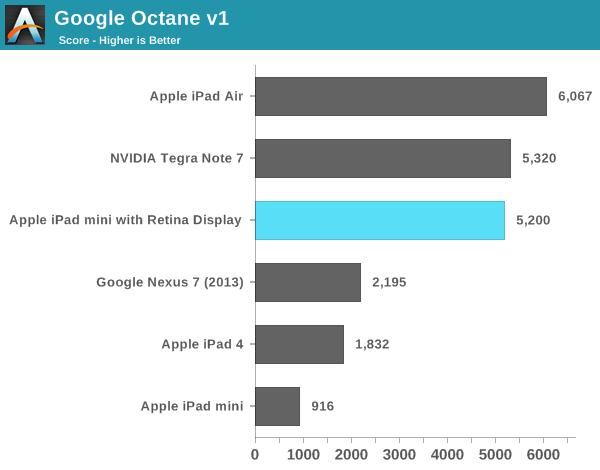
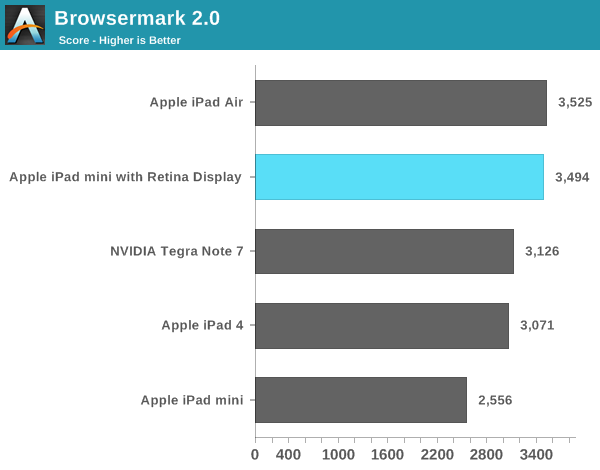
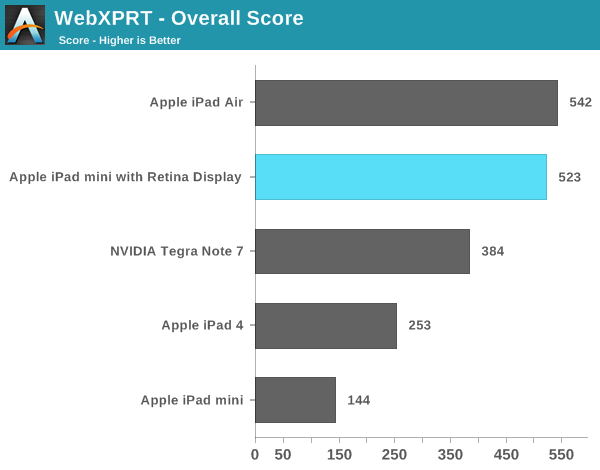
Compared to the first generation iPad mini, the new model is in a completely different performance league. Keep in mind the first mini used Apple’s A5 SoC based on an ARM Cortex A9. That’s the same single threaded performance as what’s in an iPhone 4S, and under iOS 7 it’s clearly running into some performance limits. The new mini with Retina Display however is a completely different animal. It’s fast.
Even comparing to the 4th generation iPad, the new mini is noticeably quicker.
Memory Bandwidth
Looking at the iPad mini’s memory bandwidth curve, we see it tracks very closely with that of the iPhone 5S. This is a slightly modified version of our previous bandwidth test, and you can see peak usable memory bandwidth (from the CPU’s perspective) of around 10GB/s. The ~12GB/s area right before you get out to main memory is bandwidth to the A7’s 4MB system-wide cache that sits after the shared L2 and the memory controller. This cache appears to service CPU, GPU and ISP requests at least.
GPU Performance
I believe the A7’s PowerVR G6430 GPU runs at around 450MHz. This frequency appears unchanged across all three A7 implementations. Once again, the big difference is how much thermal headroom exists in the platform which has an impact on overall performance.
Kishonti’s low level GPU performance tests back up my assertion that GPU frequency is fixed across all A7s. The iPad mini with Retina Display delivers equal performance to the iPad Air. The bigger news here is that nearly all of the GPU bound 3D tests seems to peg the mini and Air as equals. These are some pretty intense tests, but it looks like on the GPU side there’s no significant throttling when running at full tilt.
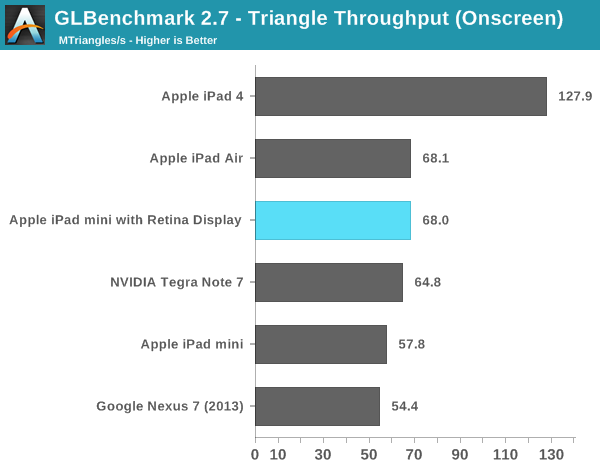

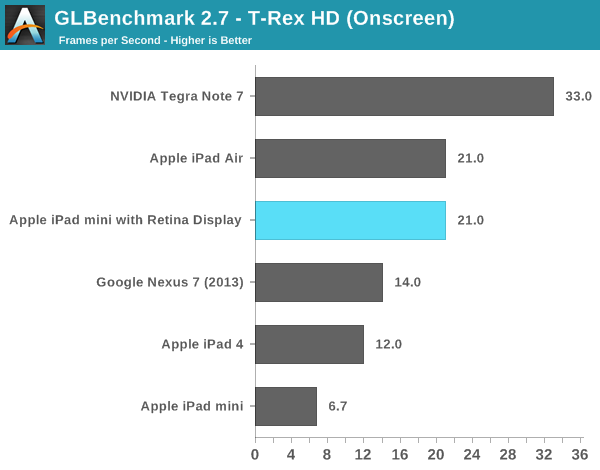

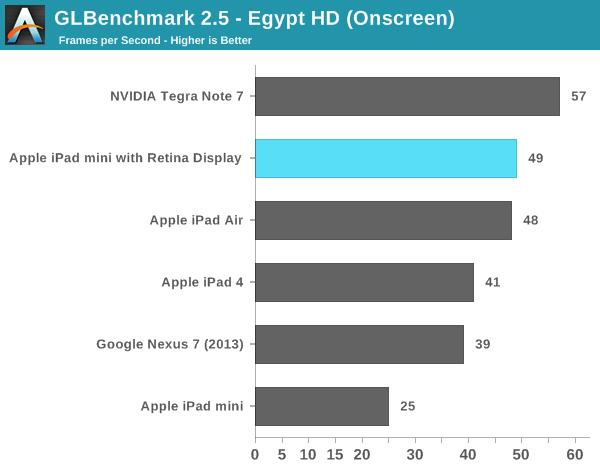
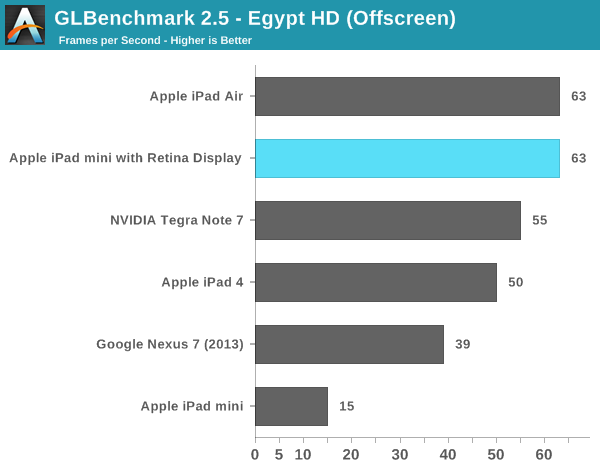
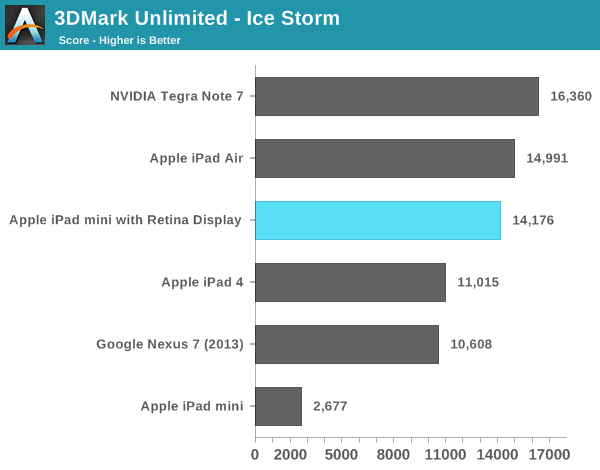
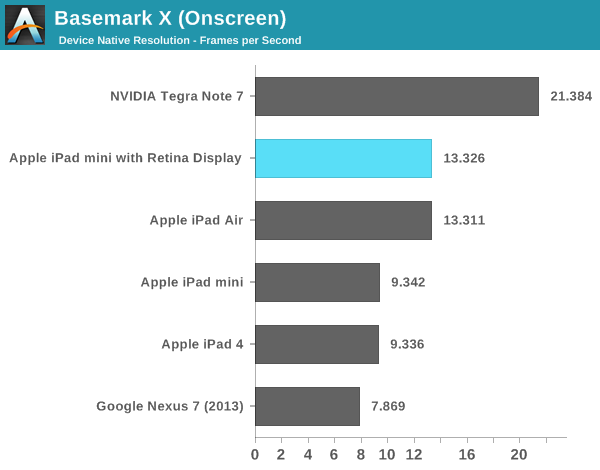
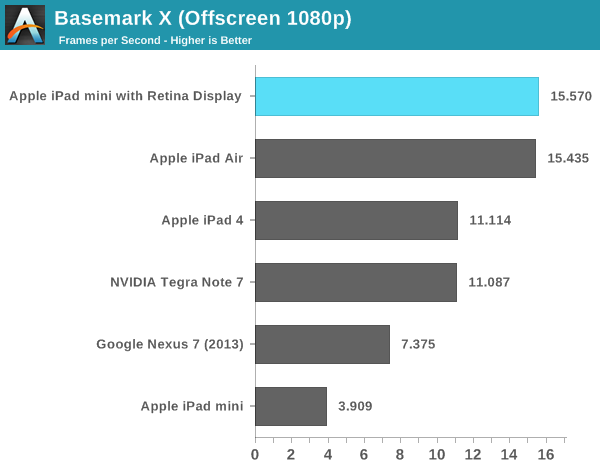
As I mentioned in our iPad Air review, despite having less peak theoretical memory bandwidth than the A5X/A6X, the A7 in the iPad mini never seems to regress in performance compared to even the iPad 4. Across the board the mini appears to be faster, more responsive and have more performance on tap than any prior iPad (big or small). The comparison to the original iPad mini is of course night and day. Even looking at lighter tests like the old GLBench Egypt HD benchmark, the iPad mini with Retina Display manages to be nearly twice as fast as the original mini - all while rendering 4x the number of pixels.


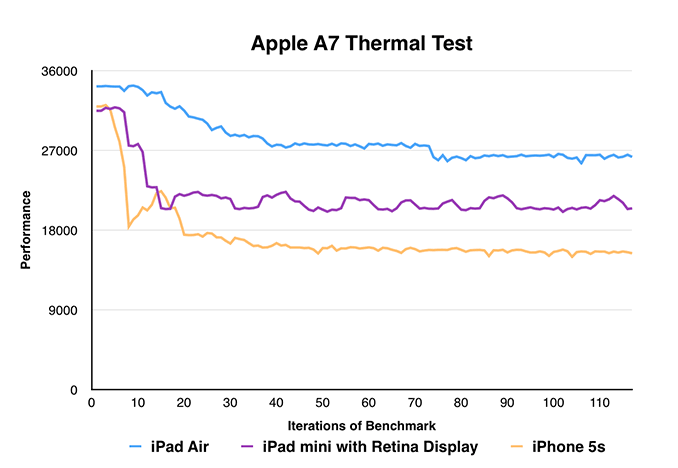
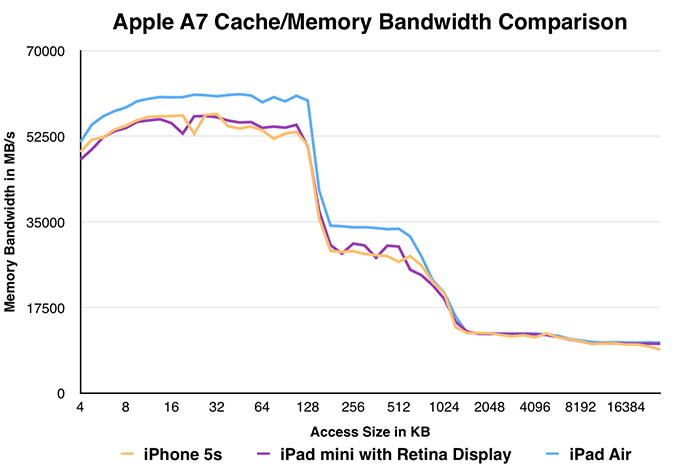








345 Comments
View All Comments
ws3 - Saturday, November 16, 2013 - link
So buy the base model and see if it fits your needs. if not, either return it or sell it and then either upgrade or switch vendors. It's just not as difficult as you are making it.nedjinski - Saturday, November 16, 2013 - link
Once again the Kindle HDX is left out of the comparison - even as a reference device.We can only speculate as to why.
solipsism - Saturday, November 16, 2013 - link
Why would it be a reference device if they haven't yet completed a review?You do know that Anand was given an iPad Mini 2 for testing but was he given a Kindle Fire HDX? Reviews take time, especially ones by AnandTech for which I am thankful. Let's not push the last bastion of thorough tech journalism into an Engadget-like blog site.
There is also the issue of the Kindle Fire being the AOL Online of the tablets world. As nice as the HW is I'd definitely go for an actual Android tablet than the Kindle Fire which on this site seems to be the common theme when I read how the iPad isn't "a real tablet." If the iPad isn't a real tablet then the Kindle Fire definitely isn't.
nedjinski - Saturday, November 16, 2013 - link
Fine - we'll believe it when we see it.As to the KF being the AOL of tablets - well that's the point actually as the HDX models seem to be rocking the boat pretty hard to break that image. There seem to be a lot of assumptions made about the new HDX tabs. I look forward to a real world shoot-out.
teiglin - Saturday, November 16, 2013 - link
The speculation leads us to an easy conclusion though--Anand has never used a Kindle Fire HDX. I do wish he'd mention it anyway as it is an interesting player in this field--especially the 8.9, which doesn't really have any competition in its size class.Anand, get on Amazon to sample you some HDXs! They look like solid tablets in most ways (blue light bleed or no).
huzzyz - Saturday, November 16, 2013 - link
First off, I love android for its ease of use and customization the very reason I love my Mac mini and my MBA, OSX "for me" gives me a lot more to customize. That being said. The simple reason I cannot connect an iOS device at anytime, anywhere (other than 5 pre-authorised devices) and just transfer files is also the single reason I will never invest in an iOS device it bottoms down to ease of use. Frankly iOS is too sandboxed for its own good. The iPad mini looks great, performs very well and much powerful that the compared Nexus 7, granted but thats all it is.BGQ-qbf-tqf-n6n - Saturday, November 16, 2013 - link
Sorry, joined just for this comment.Pre-Authorization is only required to sync *purchased* iTunes content, not files in general.
You can transfer files between apps over iTunes USB file sharing without using one of your 5 authorization slots. You do however need to use an app which supports it (GoodReader for example), and "trust" the computer to transfer data over USB (you can trust an unlimited number of computers).
Puberticus - Saturday, November 16, 2013 - link
You're missing the broader picture here. There is a reason for all of that. Malware. DOD issued a report recently that said that 80%+ of all the phone/tablet malware out there was android-based.None of us like sandboxing. But keep in mind there's a reason for it.
kyuu - Saturday, November 16, 2013 - link
Any chance you guys are going to review the Dell Venue Pro 8, Lenovo Miix 2, or any of the 8" Win8.1 tabs?BPB - Saturday, November 16, 2013 - link
The Asus T100 was reviewed a month ago.